Mastering Futures Trading on Think or Swim Platform
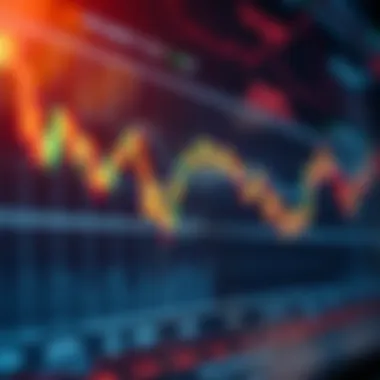
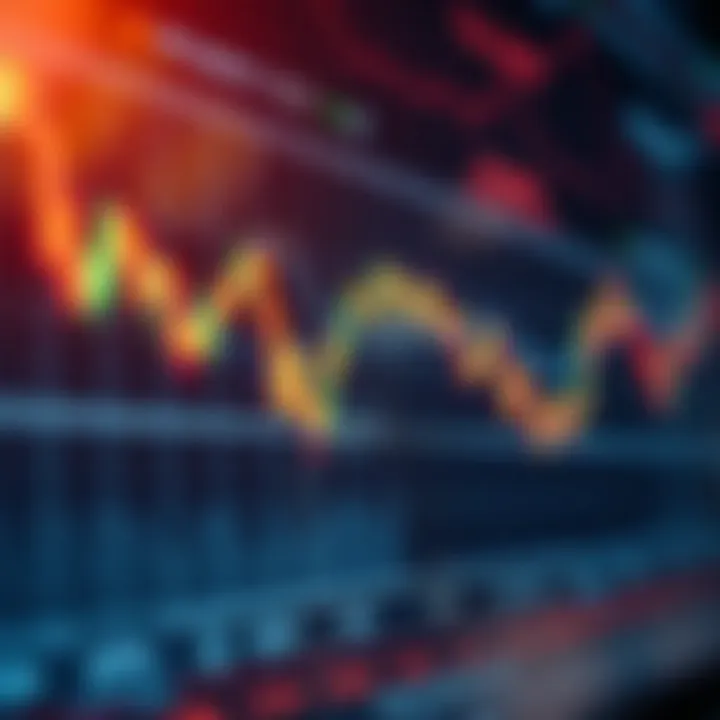
Intro
Embarking on the journey of futures trading can feel like setting sail into uncharted waters. The potential rewards are sizable, but the complexities can overwhelm even seasoned investors. Futures trading offers a unique opportunity to lock in prices for assets in the future, allowing traders to speculate and hedge against market movements. However, before diving headfirst into this dynamic market, it’s important to grasp the foundational concepts and nuances that distinguish futures from other investment strategies.
Overview of Investment Products
Description of Different Financial Products
When it comes to investing, futures contracts don't exist in a vacuum. To navigate the compelling world of futures trading, one must first understand where they fit in the broad landscape of financial products. Common types of investments include stocks, bonds, and mutual funds. Each type serves distinct purposes and carries varying degrees of risk.
Futures, on the other hand, are agreements to buy or sell an asset at a predetermined price at a specified time in the future. Traders aren’t just betting on the direction of market prices; they are engaging in a sophisticated dance of timing and valuation that involves commodities, currencies, or indices.
Importance of Understanding Investment Options
Having a strong grasp of the various investment options is crucial. Not only does it cultivate a broader perspective of the markets, but it also underpins sound decision-making. A risk-averse investor might lean towards bonds, while a more aggressive trader might see the allure of futures markets.
Understanding these products equips traders to assess their own risk tolerance and develop tailored strategies for success. When you know the lay of the land, trading feels less like gambling and more like a calculated endeavor.
Investment Terminology
Key Terms and Definitions
In every realm, a specialized language evolves, and trading is no different. Key terminology becomes essential to communicate effectively and understand the underlying mechanisms of the market. Selecting correct terms will significantly impact a trader’s success. To clarify the lingo:
- Contract: A formal agreement to buy or sell a specified quantity of an asset.
- Margin: The amount of money a trader must deposit to control a contract, acting as collateral.
- Long Position: Purchasing a futures contract anticipating the price will rise.
- Short Position: Selling a futures contract expecting the price will fall.
By familiarizing oneself with these and other key terms, traders position themselves to grasp market dynamics more effectively.
Common Terminology Misconceptions
Misunderstandings surrounding trading terms can lead to missteps that may cost both money and opportunities. For instance, the concept of margin often gets misconstrued; it’s not simply a down payment but rather a performance bond to ensure contract obligations are met. This distinction can be pivotal during periods of price volatility when margin calls may occur.
Moreover, many new traders mistakenly believe that entering a short position is akin to a straightforward bet against a stock. In reality, it involves borrowing the asset, thereby adding layers of complexity and risk that need to be navigated carefully.
End
Gaining a thorough understanding of financial products and investment terminology sets the groundwork for navigating the intricate world of futures trading. With the right knowledge and strategies, both novices and seasoned traders can approach the market with confidence and insight, paving the way for potentially fruitful trading engagements.
"Knowledge is the compass that helps navigate the tumultuous seas of trading."
In preparation for investing on platforms like Think or Swim, be sure to continuously familiarize yourself with trading concepts and updates from dependable sources. Trusted resources include Investopedia and research publications on Britannica. Armed with this information, you can embark on your futures trading journey with eyes wide open.
Understanding Futures Trading
Futures trading is a pivotal aspect of the financial markets, enabling participants to speculate and hedge against price movements of various assets. Understanding this topic lays the foundation for both novice and seasoned investors who seek to navigate the often tumultuous waters of trading. With knowledge of futures trading, traders can make informed decisions, whether they're planning to lock in prices for commodities, manage risk, or capitalize on market trends.
Definition of Futures
Futures contracts are agreements to buy or sell an asset at a predetermined price on a specific future date. These contracts are standardized and traded on exchanges, which adds a layer of transparency and security. Unlike spots or other forms of trading, futures contracts obligate the buyer and seller to complete the transaction, unlike options that provide the right but not the obligation. This structure encourages strategic planning and risk assessment, making it crucial for both parties involved to comprehend their investment and its potential outcomes.
History and Evolution
Futures trading has its roots going back to ancient civilizations. The first recorded transactions date back to 1800s in Japan, where rice merchants would buy and sell future crops. In the United States, the establishment of the Chicago Board of Trade in 1848 marked a significant evolution. Throughout the decades, trading has transitioned from physical commodities to include financial instruments like currency and interest rates. Today, it is a global endeavor with sophisticated platforms and technology, shaping trading practices and strategies.
Key Terminology
In any complex subject, understanding the terminology is essential. In futures trading, key terms include:
Contracts
Contracts in futures trading act much like a binding agreement. They define the specifics of the transaction such as quantity and delivery date. One characteristic that makes futures contracts particularly valuable is the ability to trade a wide range of assets—from agricultural products to indices—allowing for diversification in investment strategies. The unique feature of futures contracts being standardized ensures liquidity, thereby facilitating quicker transaction times. However, it’s important to note that the obligation to fulfill the contract can lead to significant risks if market movements are unfavorable.
Margin
Margin represents the amount of capital required to open and maintain a futures position. A distinctive feature of margining in futures trading is that it allows traders to control larger positions than their initial investment might suggest, providing leverage. This concept is alluring but does come with its own set of risks. High leverage can amplify both profits and losses, meaning that fluctuations in market prices can impact the investor's equity much more significantly than a non-leveraged position.
Leverage
Leverage in futures trading enables participants to amplify their market exposure without putting up the full investment amount upfront. It is a double-edged sword; while it can lead to substantial gains, it can also translate into hefty losses. Leverage is defined by the ratio of the amount controlled to the margin required—higher leverage means less capital upfront, but more risk. Understanding the proper use of leverage is crucial for any trader aiming for success in the futures market.
"Futures trading isn't merely about predictions; it’s a game of risk management and strategic foresight."
In summary, mastering the basic concepts associated with futures trading is essential for anyone looking to enter this field. Each element, from how contracts are structured, to the dynamics of margin and leverage, contributes to a comprehensive understanding that every trader must have. By grasping these fundamentals, you're better equipped to navigate the complexities of futures trading.
The Think or Swim Platform
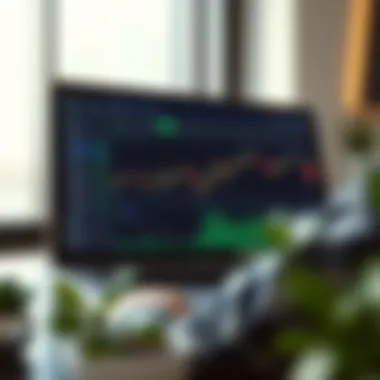
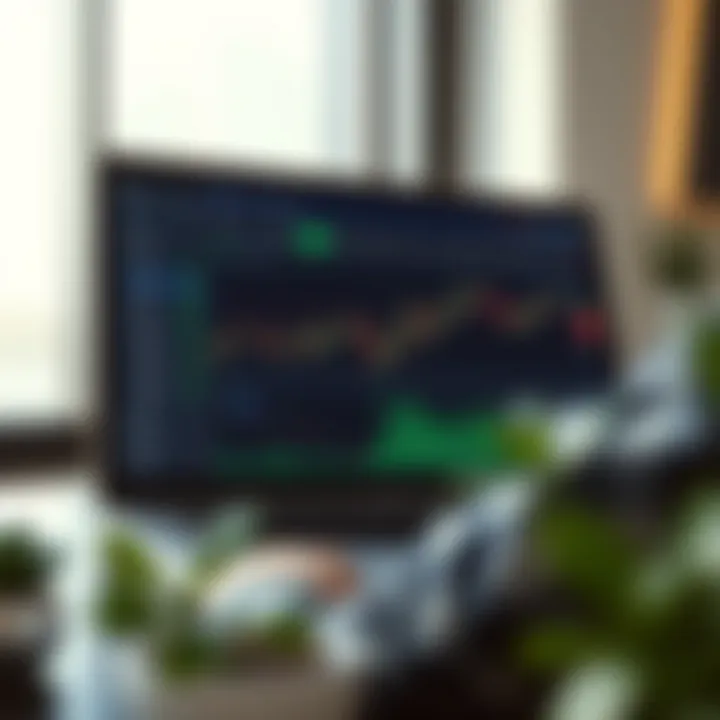
The Think or Swim platform, developed by TD Ameritrade, represents a powerful trading tool that transcends traditional expectations for futures trading. It's vital to understand this platform as it combines advanced functionalities with user-friendly design, creating an environment where both novices and seasoned traders can thrive. One of the distinguishing traits of Think or Swim is its versatility; it caters to a range of trading styles, enabling users to approach the market with tailored strategies.
For traders, especially those operating in the futures markets, having a dependable and feature-rich platform is a game changer. Think or Swim’s emphasis on data analysis, real-time market information, and comprehensive trading tools positions it as an exemplary choice for traders looking to refine their strategies and execute trades efficiently. With a wide array of charting capabilities and access to numerous trading products, this platform stands out in what can often be an overwhelming trading landscape.
Overview of Features
The Think or Swim platform boasts an extensive range of features designed to assist traders in making informed decisions. Some key features include:
- Advanced Charting Tools: Users can create complex charts with multiple indicators, drawing tools, and customizable layouts.
- Paper Trading Feature: An invaluable asset for beginners; this tool allows traders to practice their strategies without financial risk, simulating market conditions.
- Live Streaming Data: Access to real-time data gives traders insights into price movements as they happen, ensuring they can pivot quickly in response to market shifts.
- Customizable Alerts: Traders can set alerts for price movements, volumes, or other significant events, allowing for proactive management of positions.
Additionally, Think or Swim provides a feature called "Think Script," enabling users to develop their own trading algorithms. This level of customization is crucial for traders who wish to integrate personal strategies and methods into their trading routine.
User Experience and Interface
User experience is paramount in any trading platform, and Think or Swim does not disappoint. The interface is designed to cater to the needs of both beginners and advanced traders. Upon logging in, users are met with an intuitive dashboard that simplifies navigation. Menus are organized logically, making it easy to find tools and information. The platform has undergone several iterations, and each has emphasized enhancing usability. Contextual help and tooltips appear throughout, ensuring that traders know how to utilize various features without feeling overwhelmed.
The design aesthetics are clean and straightforward, which pairs well with the functionality. Charts and graphs are visually well-integrated, minimizing clutter and allowing traders to focus on data that matter most. Moreover, it supports multi-monitor setups, which helps in monitoring different aspects of the market without missing a beat.
In terms of accessibility, Think or Swim is available on various devices including desktop and mobile, which means that traders can stay connected and manage their trades wherever they are. The mobile app retains many essential features, offering flexibility to users.
Integration of Research Tools
One of the standout aspects of Think or Swim is how it integrates various research tools seamlessly into the trading experience. Access to research is a vital component for informed decision-making and managing risk. The platform connects users to:
- Market News Feeds: Traders can stay updated with live news that could impact their positions, from economic reports to geopolitical events. Marked events are displayed in real-time, pinning them against charts for better context.
- Analytical Reports: This feature offers insights from financial analysts, providing a deeper layer of understanding regarding market trends. The reports cover a range of commodities, indices, and various assets.
- Economic Calendar: This tool allows traders to view upcoming economic events and data releases, which can be critical in preparing for volatility. It’s like keeping an eye on the weather before venturing out—important to know what conditions to expect.
By amalgamating research tools within its ecosystem, Think or Swim not only simplifies the process of staying informed but also enhances trading strategies. Having essential information at the fingertips increases trading efficiency, allowing for quicker and more accurate decision-making.
"In trading, knowledge is power, and the Think or Swim platform ensures that power is readily accessible."
In summary, the Think or Swim platform combines robust features with a user-friendly interface, making it an integral part of the futures trading landscape. It empowers traders to approach the market with more confidence, equipped with the necessary tools and insights to navigate complexities efficiently.
Key Strategies in Futures Trading
Understanding key strategies in futures trading is paramount for successful navigation through this often tumultuous market. These strategies not only provide a framework for decision-making but also equip traders with the tools necessary to react effectively to price fluctuations. With a combination of technical and fundamental analysis, as well as effective risk management, traders can significantly enhance their chances of profit.
Technical Analysis
Price Charts
Price charts serve as the backbone of technical analysis, allowing traders to visualize market movements over time. They show historical prices and facilitate the identification of patterns, helping traders anticipate future market behavior. A key characteristic of price charts is their ability to encompass various timeframes, from minutes to days, giving traders the flexibility to analyze as needed. The unique feature of price charts is that they often reveal crucial support and resistance levels, which can inform entry and exit points. However, while price charts are beneficial for making quick decisions, they can sometimes lead to over-trading if signals are misinterpreted.
Indicators
Indicators are integral tools that augment price charts, providing additional insights to traders. These mathematical calculations, based on price and volume, can signify trends, momentum, and market strength. One of their key characteristics is the ability to generate specific signals, like buy or sell recommendations, which can help traders make informed decisions. The unique feature of indicators lies in their versatility — ranging from simple moving averages to complex oscillators. However, dependence on indicators can lead to delayed reactions during rapidly fluctuating markets, making it essential for traders to apply them judiciously.
Volume Trends
Volume trends provide a crucial insight into the strength behind a price movement. Understanding how volume fluctuates during various market conditions offers a deeper analysis beyond price alone. A key characteristic of volume trends is their role in confirming or questioning price movements. For instance, if a price increase occurs on high volume, it supports the validity of the trend, while a price rise on low volume can indicate a potential reversal. The unique feature of analyzing volume trends helps traders gauge market sentiment transparently. However, focusing solely on volume trends without correlating with price data can lead to misleading conclusions.
Fundamental Analysis
Economic Reports
Economic reports serve as primary indicators of market health and trends, delving into factors like employment rates, GDP growth, and inflation. They are essential as they encapsulate the overall economic landscape that influences futures prices. A key characteristic of economic reports is their scheduled releases, allowing traders to prepare in advance for anticipated market reactions. The unique feature of these reports is their ability to shift market sentiment rapidly; for instance, a positive jobs report may bolster confidence and drive prices up. Nonetheless, traders need to be cautious, as markets can react irrationally to economic data, potentially leading to unpredicted volatility.
Market Sentiment
Market sentiment reflects the overall attitude of investors toward a particular security or market. Understanding sentiment is critical, as it can drive prices away from underlying fundamentals. A key characteristic of market sentiment is its often irrational nature; it can lead to price bubbles or sharp declines based on collective emotions rather than actual data. Sentiment analysis, characterized by examining social media trends or investor surveys, can be valuable for anticipating market direction. However, relying too heavily on sentiment without fundamental analysis can lead to misguided positions.
News Events
News events can significantly impact futures trading, often causing sharp price movements. These events can range from geopolitical happenings to corporate earnings reports, all of which can trigger buyer or seller reactions in the market. The key characteristic of news events is their unpredictability, leading traders to adapt swiftly to new information. The unique feature of analyzing news events is the potential for creating quick profit during times of volatility if a trader can position themselves effectively. However, the fast pace of information flow means traders risk falling into the trap of trading on hearsay rather than established patterns.
Risk Management Techniques
Stop-Loss Orders
Stop-loss orders are a critical component of effective risk management, allowing traders to limit potential losses on a position. They function by automatically selling a security when it reaches a certain price, effectively capping the maximum loss. A key characteristic of stop-loss orders is their ability to act as a safety net in volatile markets. The unique feature of this technique is the peace of mind it brings traders, enabling them to engage in the market without constant monitoring. However, the downside is that stop-loss orders can sometimes be triggered by short-term fluctuations, resulting in premature exits from otherwise profitable trades.
Position Sizing
Position sizing is vital in determining how much capital to allocate to a particular trade. This strategy helps in managing risk while maximizing potential gains. A key characteristic of proper position sizing is its reliance on a trader’s risk tolerance and overall portfolio size. The unique feature here is the ability to balance between risk and reward; smaller positions can reduce risk exposure while larger ones can increase potential returns. However, poor position sizing can lead to overexposure, increasing vulnerability in the overall trading strategy.
Diversification
Diversification is a method used to spread risk across multiple assets or markets. This technique is essential in futures trading as it minimizes the impact of a poor performing contract on an overall portfolio. A key characteristic of diversification is its effectiveness in reducing volatility and unexpected losses. The unique feature is that it allows traders to capitalize on different market conditions, which can mitigate risk. However, excessive diversification can lead to dilution of returns, making it crucial for traders to find a balance between variety and focus.
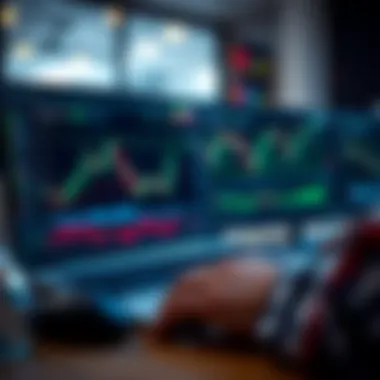
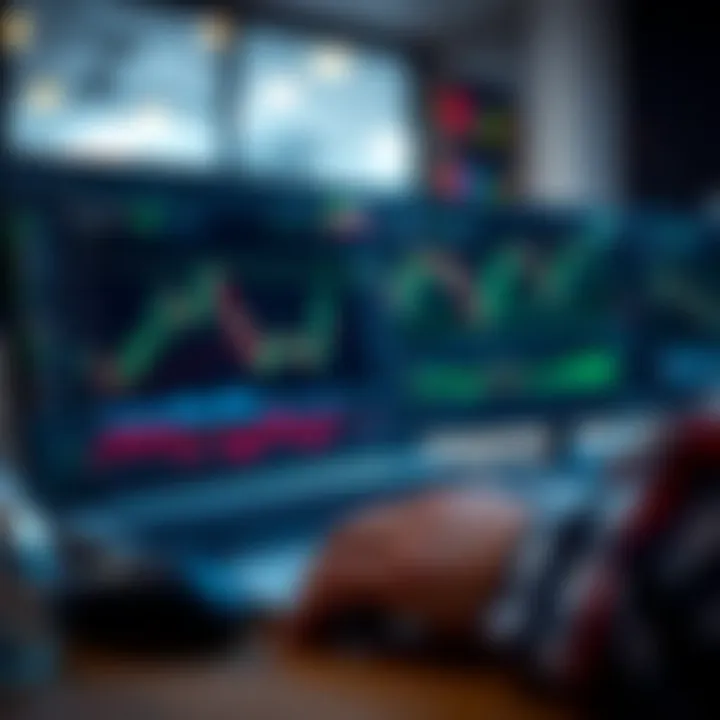
A strategic approach to futures trading encompasses various methodologies and tools, each contributing uniquely to a trader’s success. Mastering these techniques can give traders the upper hand in a competitive market landscape.
Futures Contracts in Focus
Futures contracts serve as the backbone of futures trading, establishing standardized agreements between two parties to buy or sell an asset at a predetermined future date and price. These contracts are not merely financial instruments; they represent a complex tapestry of market expectations, risk management, and investment strategies. Understanding the intricacies associated with futures contracts is essential for traders aiming to navigate the volatile waters of the futures market. The type of futures contract one chooses can significantly impact both risk tolerance and potential reward.
Types of Futures Contracts
When diving into the world of futures contracts, one comes across three main categories: commodity futures, financial futures, and index futures. Each category brings its own unique flavor to the trading table, allowing traders to align their strategies with the underlying characteristics of the asset in question.
Commodity Futures
Commodity futures, as the name suggests, are contracts that deal with physical assets like gold, oil, and agricultural products. These contracts allow traders to bet on the price movement of commodities, often serving as a hedge against inflation and market volatility. One key characteristic of commodity futures is their tangible nature; unlike securities, these assets can often be physically delivered or stored.
Benefits of Commodity Futures:
- Price Discovery: They provide efficient price signals reflecting supply and demand.
- Hedging Opportunities: Producers and consumers use them to lock in prices.
However, the down side comes with storage costs and the complexities of managing physical assets, which can introduce additional risks into trading strategies.
Financial Futures
Financial futures involve contracts based on financial instruments such as currencies, interest rates, and stock indices. These contracts are especially favored among investors seeking to hedge against financial risks or speculate on market movements without directly buying the assets. A notable aspect of financial futures is their flexibility; the contracts can often be traded at any time before expiration, providing liquidity and convenience.
Benefits of Financial Futures:
- Lower Capital Requirement: Traders can gain exposure to large market movements with relatively low initial outlay due to leverage.
- Versatility: They can be used for hedging against various financial risks.
However, one needs to be cautious of the inherent risks brought on by leverage, which can magnify both gains and losses.
Index Futures
Index futures are contracts that track the performance of financial indices, such as the S&P 500 or NASDAQ-100. They serve as essential tools for traders aiming to speculate or hedge their positions based on the market's overall direction. One defining trait of index futures is that they are cash-settled, meaning they don't require physical asset delivery. Instead, the profits or losses are settled in cash, making transactions smoother.
Benefits of Index Futures:
- Market Exposure: They provide an easy way to gain exposure to a broad market segment without having to pick individual stocks.
- Leverage: Similar to financial futures, they offer significant leverage, increasing potential returns without a massive investment.
However, since they are subject to market swings, sudden changes can lead to rapid unexpected losses.
Selection Criteria
When considering futures contracts, understanding the selection criteria is crucial. Traders must weigh various factors to ensure they choose contracts aligned with their trading strategies and risk profiles.
Market Liquidity
Market liquidity refers to how quickly and easily assets can be bought or sold without affecting their price. It is a considerable factor when selecting futures contracts. A high liquidity level allows traders to enter and exit positions with minimal price slippage. Therefore, it’s wise for traders to focus on contracts with robust trading volumes.
- Key Feature: High liquidity reduces transaction costs and allows for better price execution.
- Benefits: It provides an environment that makes it easier to implement strategies and manage risk effectively.
One downside, though, is that less popular contracts may have wider bid-ask spreads, which can eat into potential profits.
Volatility
Volatility measures price fluctuations within a certain period. It stands as a crucial consideration in futures trading, as higher volatility often presents both opportunities and risks. Traders need to gauge the expected volatility of a contract to assess its risk-reward profile accurately.
- Key Feature: High volatility contracts can increase potential returns but also elevate risks.
- Benefits: Suitable for seasoned traders who can capitalize on sharp price movements.
However, the volatile nature can lead to rapid losses if trades go against market trends.
Contract Specifications
Understanding contract specifications is vital to making informed decisions. Each futures contract has specific rules regarding delivery dates, contract sizes, and price increments. Familiarity with these details can save traders from unwelcome surprises during execution.
- Key Feature: Specifications dictate contract behavior and can influence trading strategies.
- Benefits: Clear specifications help in strategizing effectively based on asset types.
Yet, the complexity of these specifications can sometimes confuse traders, especially those new to the market.
Emotional Discipline in Trading
Emotional discipline plays a pivotal role in the world of trading, especially in futures markets where market fluctuations can evoke a host of emotions. The ability to manage these emotional responses is crucial not only for maintaining focus but also for executing a well-structured trading plan. When traders allow emotions to drive their decisions, it can lead to overtrading, impulsive actions, and ultimately significant financial losses. Therefore, understanding emotional discipline is key to achieving success in trading.
Incorporating emotional discipline means committing to a systematic approach, even when impulsive thoughts creep in during volatile times. With a clear focus on defined goals, traders can navigate market ups and downs without losing sight of their long-term objectives. A well-regulated emotional state enhances decision-making capabilities and supports the clear-headed analysis necessary for effective trading.
Psychological Aspects


Trader Mindset
The trader mindset embodies the psychological foundation from which traders approach the market. This mindset is characterized by a balanced perspective on risk, a commitment to continual improvement, and an understanding of personal limitations. Emphasizing self-awareness and adaptability are some of the main attributes of a strong trader mindset.
One key characteristic of this mindset is resilience, which becomes essential as losses occur. A resilient trader is poised to learn from setbacks rather than surrender to despair. This unique feature carries weight; mistakes and losses can be stepping stones to future gains if approached positively. For this article, it’s beneficial because a well-adjusted trader can view moments of tension as opportunities for growth, not merely crises to react against.
Managing Stress
Managing stress is integral to maintaining emotional discipline. High-stakes trading environments can easily lead to heightened stress levels, which, if left unchecked, affect cognitive functions and decision-making abilities. Traders who can manage stress effectively tend to make better decisions, as they are not operating under a veil of panic or anxiety.
One of the prominent characteristics of effective stress management is the creation of a routine. A consistent trading routine can mitigate uncertainty and provide clarity, leading to improved outcomes. The unique aspect is that effective stress management techniques, such as mindfulness or structured risk assessment, can help traders maintain their calm under pressure. However, this discipline demands constant effort, as stress can rise unexpectedly in unpredictable market environments.
Decision-Making
Decision-making in futures trading is often embedded with emotional pressure. Traders are frequently faced with choices that can either make or break their success. Understanding the psychological triggers that influence these decisions is paramount. A critical aspect of decision-making resides in the ability to remain objective, especially when the market becomes chaotic.
A define key characteristic of successful traders is their analytical thinking coupled with their emotional awareness. By balancing these, they can weigh risks against potential rewards effectively. This aspect helps to uncover the unique feature of disciplined decision-making: it allows traders to stick to their strategies and resist the temptation to chase losses or react impulsively to market news. This balance contributes significantly to long-term success in futures trading.
Building Resilience
Learning from Mistakes
Every trader will encounter mistakes as they navigate the complexities of trading. Embracing the perspective that mistakes are opportunities for learning is pivotal. This approach fosters a culture of continuous improvement where traders analyze what went wrong and why.
Recognizing mistakes is a key characteristic of resilient traders. They perceive failures not as deterrents but as building blocks towards eventual success. The unique feature of this mindset is in its transformative power; by examining losses, traders enhance their strategies and improve their future decision-making. Although learning can be painful at times, it is essential for cultivating a robust trading approach.
Adapting to Market Changes
The ability to adapt to market changes determines a trader's longevity and success. Futures markets are characterized by volatility, and remaining flexible allows traders to seize new opportunities or mitigate potential losses effectively.
An important characteristic of traders who adapt well is their willingness to change strategies based on market signals. This responsiveness is a critical tool for maintaining competitiveness. In volatile conditions, the unique feature is that being adaptable rather than rigid often leads traders to discover innovative strategies. However, this adaptability requires not only knowledge but also a willingness to step outside of comfort zones.
Practicing Patience
Patience is often the forgotten virtue in the world of trading. Markets can test the limits of a trader's patience, particularly when pursued strategies do not yield immediate results. Practicing patience involves understanding that success often follows a long-term trajectory rather than a sprint.
The key characteristic of a patient trader is the capacity to wait for high-probability setups rather than forcing trades. This strategic patience remains beneficial, as it leads to more thoughtful decisions and ultimately, better outcomes. The unique aspect of patience in trading is that it cultivates discipline; it encourages traders to stick to their trading plans without succumbing to the urge for instant gratification.
Regulatory Considerations
Navigating the world of futures trading isn't just about grasping market trends and wielding robust strategies. It's also about understanding the regulatory landscape that governs these transactions. Regulatory considerations serve as a crucial bedrock for ensuring that trading practices are conducted fairly and transparently. For both novice and seasoned investors, a solid grasp of these regulations can offer significant protection and insight into market behavior.
Legal Framework
The legal framework surrounding futures trading primarily aims to maintain market integrity and protect investors. In the United States, entities like the Commodity Futures Trading Commission (CFTC) regulate these markets. They enforce laws designed to promote honesty and transparency while preventing market manipulation and fraud.
Different countries have their own regulatory bodies; for instance, in Europe, the European Securities and Markets Authority (ESMA) plays a similar role. These bodies establish rules that set the stage for how futures markets operate. They oversee trading platforms, enforce compliance, and ensure that market participants are held accountable.
Furthermore, traders must be aware of different regulations that relate to the specific assets they are trading, such as commodities or financial instruments. Understanding the legal obligations associated with these assets is paramount, as it helps traders navigate the consequences of non-compliance, which can be as simple as fines or as severe as legal action.
Compliance Requirements
Compliance in futures trading is not just a bureaucratic term; it relates to the necessary adherence to the laws established by regulatory bodies. Traders need to engage in practices that keep them on the right side of the law. Some key considerations include:
- Reporting Transactions: Traders are often required to report their trades to ensure transparency in the market. This involves documenting every trade activity, which can be scrutinized by regulatory bodies.
- Maintaining Records: Keeping meticulous records of trading activities, including financial transactions, is vital. This not only protects traders during audits but also helps track performance and inform future trading decisions.
- Investor Protection Measures: Regulatory agencies enforce rules that require firms offering futures trading services to provide adequate disclosures to their clients. This protects traders from hidden fees or practices that could lead to unexpected losses.
- Adhering to Anti-Money Laundering (AML) Regulations: These regulations help prevent illegal activities from convincing their way into market transactions. Traders should familiarize themselves with these requirements to ensure that they are not inadvertently facilitating unlawful activity.
Effective regulation and compliance help foster a marketplace that is fair, responsible, and conducive to growth.
By understanding these regulatory considerations, futures traders can better protect themselves and navigate the markets with confidence. Knowledge of the legal landscape not only safeguards investments but also enhances strategic decision-making. Overall, staying compliant isn’t just about following the rules—it’s about fostering a sustainable trading environment.
Closure and Future Outlook
The exploration of futures trading transcends mere understanding; it is about recognizing the shifting landscape that traders navigate on platforms like Think or Swim. The conclusion embodies the cumulative learning journey of both novice and seasoned traders who venture into this complex arena.
In wrapping up, it is vital to revisit some pivotal elements. The volatile nature of futures markets keeps traders on their toes, making adaptability crucial. If one enters this field without a solid grasp of strategies, terminologies, and tools at their disposal, then they venture in at their own risk. Happy is the trader who balances knowledge with application, for this is where success often lies.
Moreover, the future outlook is particularly significant as trends in technology and regulations continually evolve.
Recap of Key Insights
- Understanding of Core Concepts: Knowing what futures contracts entail is not just academic; it's foundational. This includes being familiar with terms like margin and leverage. A thorough understanding of these terms provides an advantage in identifying high-potential trades.
- Integration of Strategy and Research: The interplay between technical and fundamental analysis is critical. Recognizing how market sentiment can shift the landscape and using tools for technical insights leads to more informed decisions. It’s a balancing act between data and gut feeling, where each trader must find their sweet spot.
- Emotional Discipline: Trading can stir a multitude of emotions. It’s key to develop the right mindset for not only reacting to situations but anticipating them. Future traders should continually refine their psychological understanding, treating every transaction as a learning opportunity.
"In futures trading, the one who stays curious and adaptive outpaces those who remain static and rigid."
Implications for the Future of Futures Trading
The implications for the future of futures trading hinge on several emerging trends.
1. Technological Advancements: Platforms like Think or Swim are constantly evolving, integrating AI-driven analytics and automated trading strategies. This means that traders who harness technology will likely see enhancements in their trading performance.
2. Regulatory Changes: The financial landscape is under constant review by governing bodies. Keeping a pulse on regulatory shifts can mean the difference between opportunity and risk. Traders must prepare for potential changes in legislation impacting margin requirements or trading hours.
3. Market Accessibility: As more individuals gain access to market information and trading tools, the complexion of futures trading is likely to shift. Novice traders will bring diverse strategies and perspectives, which can enrich market dynamics but also intensity competition.



